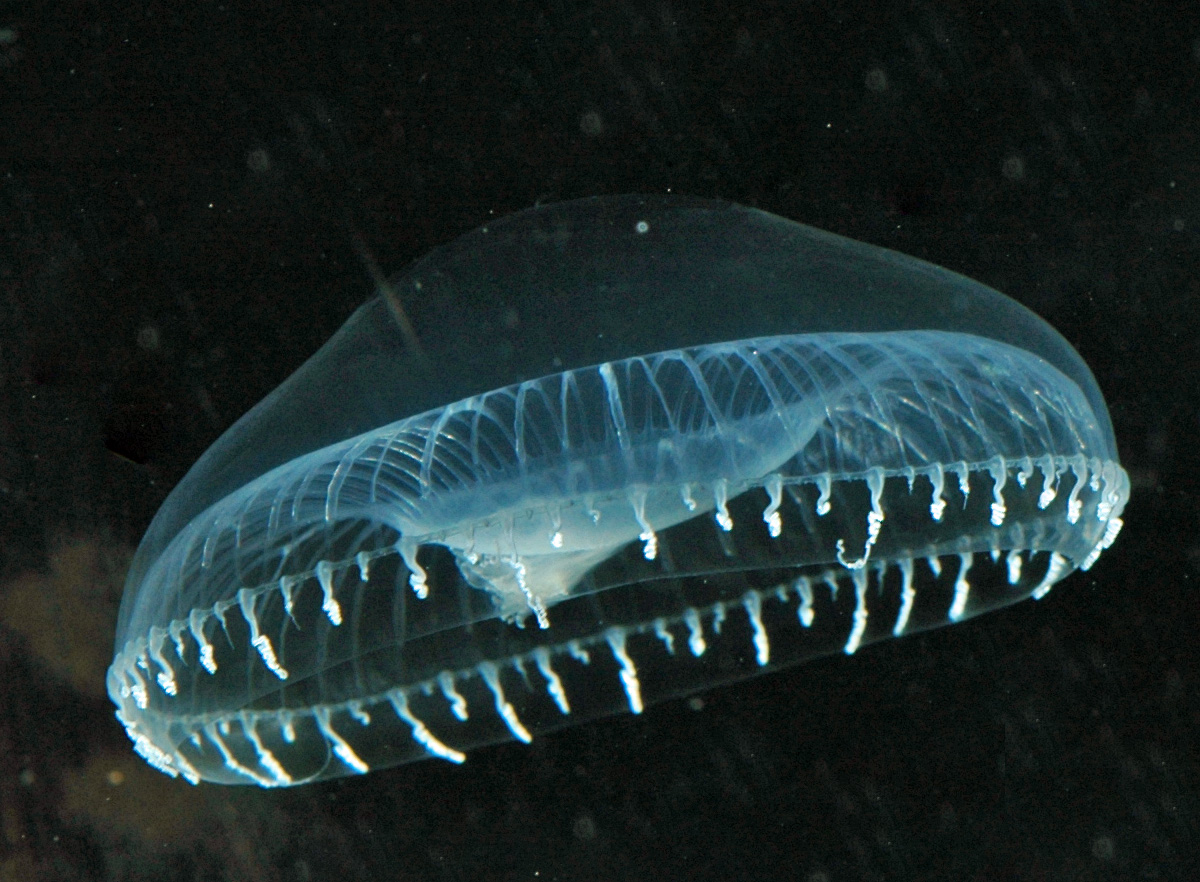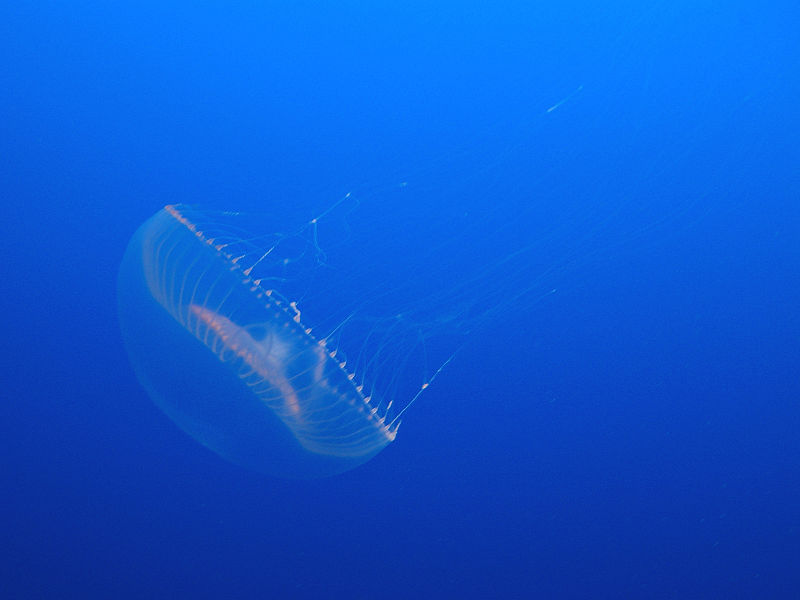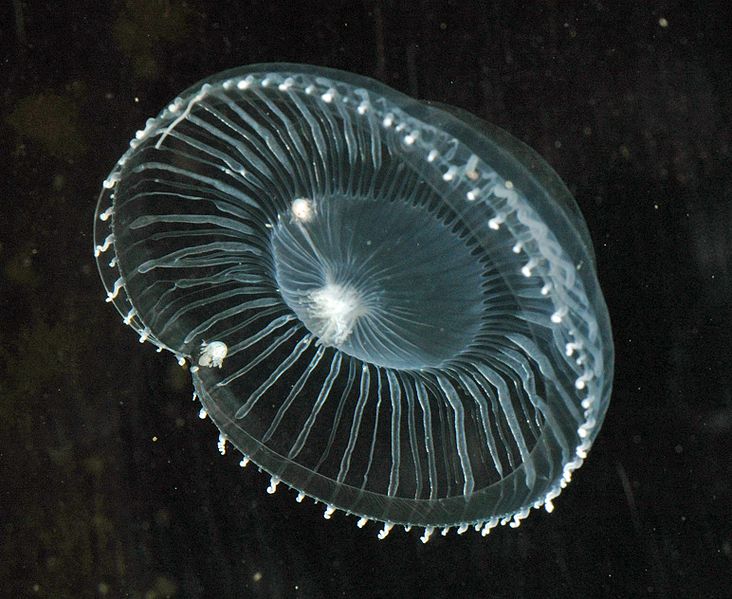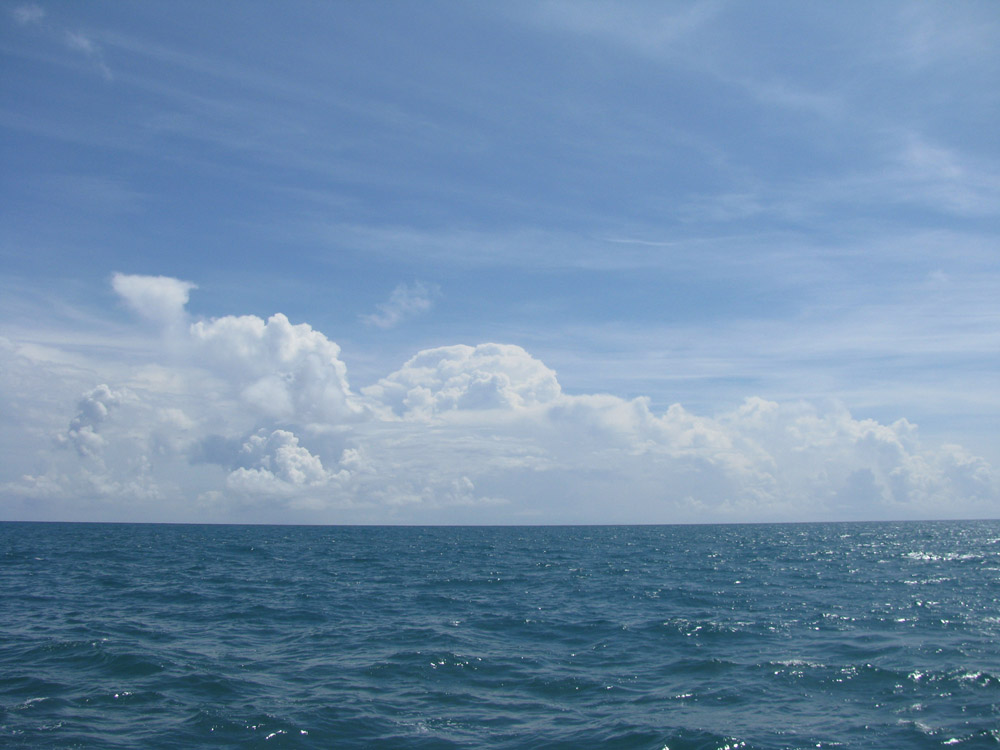Habitat
Aequorea victoria resides in a very expansive and diverse
habitat ranging from Alaska to central California mostly in
cooler water (Crystal Jelly, 2013). It is most commonly found
in the Washington state and British Columbia areas that have
water temperatures varying seasonally from about 45°C-55°C
(Crystal Jelly, 2013). One area of particularly high Aequorea
victoria concentration is in Puget Sound. Interestingly the
relative amount of jellyfish is not homogenous in this area
(Rice et al., 2011). In a study of the distribution of fish
(click
here for one of the fish studied) and
jellyfish among 4 basins in Puget Sound, jellyfish (Aequorea
victoria) were found to be dominant in the 2 southern basins
whereas fish were dominant in the northern basins (Rice et al.,
2011). According to Casimir Rice and his fellow researchers,
this difference in distribution is most likely due to the
sensitivity of the fish to environmental factors (Rice et
al., 2011). While
the researchers were not able to draw any concrete conclusions
about the jellyfish demograp hics,
there are many possible factors that could influence the
Aequorea victoria population. For example, with a lack of
predation and with an ample food supply, it would be conceivable
for the population of jellyfish to grow to the carrying capacity of
the ecosystem. This is just one possible factor that may
have contributed to the fish and jellyfish population
differences between the basins of Puget Sound. However,
this study may have implications on the larger scale of the
ability of Aequorea victoria to occupy a niche when
environmental conditions are not conducive to growth of fish and
other competitor and predator populations.
hics,
there are many possible factors that could influence the
Aequorea victoria population. For example, with a lack of
predation and with an ample food supply, it would be conceivable
for the population of jellyfish to grow to the carrying capacity of
the ecosystem. This is just one possible factor that may
have contributed to the fish and jellyfish population
differences between the basins of Puget Sound. However,
this study may have implications on the larger scale of the
ability of Aequorea victoria to occupy a niche when
environmental conditions are not conducive to growth of fish and
other competitor and predator populations.
The Puget Sound study is one example of how Aequorea victoria is able to thrive in varied conditions. However, adaptability may have lead to misclassification within the genus Aequorea because of its large habitat range (Mills, 2009). Due to this uncertainty, the habitat of Aequorea victoria may not be the full range of the west coast. However, research to sort Aequorea species into the correct taxa is being conducted by invertebrate biologists such as Dr. Paulyn Cartwright and her team who have proposed a phylogeny for the relationship of Aequorea and other hydrozoans (click here for Cartwright's phylogeny).
Throughout these diverse climates, Aequorea victoria utilizes its
habitat in similar ways. Populations of Aequorea victoria travel in
stream s
within the ocean close to shore (Shimomura, 1995). This behavior
made it easier for Dr. Osamu Shimomura to collect Aequorea victoria
specimens for his GFP research. Dr. Shimomura was able to capture
specimens relatively easily from the pier at Friday Harbor, WA due
to the organisms close proximity to shore (Shimomura, 1995).
Without being able to easily acquire samples, it may have taken Dr.
Shimomura and other GFP researchers much longer to identify GFP.
Consequently, todays GFP research may not have progressed as far as
it has (click
here for link to GFP organisms).
s
within the ocean close to shore (Shimomura, 1995). This behavior
made it easier for Dr. Osamu Shimomura to collect Aequorea victoria
specimens for his GFP research. Dr. Shimomura was able to capture
specimens relatively easily from the pier at Friday Harbor, WA due
to the organisms close proximity to shore (Shimomura, 1995).
Without being able to easily acquire samples, it may have taken Dr.
Shimomura and other GFP researchers much longer to identify GFP.
Consequently, todays GFP research may not have progressed as far as
it has (click
here for link to GFP organisms).
Despite Aequorea victoria being a seemingly hearty animal,
populations are dwindling in areas that were previously highly
populated, such as the coast of Washington state near Friday Harbor
(Mills, 2009). For unknown reasons, populations of Aequorea
victoria in this area have declined. This area was also the
site of Dr. Frank Johnson and Dr. Osamu Shimomura’s Aequorea
victoria sample collection for their GFP research due to the
abundance of Aequorea victoria during their collection period.
Although Johnson and Shimomura collected thousands of samples of Aequorea
victoria over many summers from this area, the recent
Aequorea victoria population decline was not caused by Johnson and
Shimomura’s sample collection according to Dr. Claudia E. Mills (Mills, 2009).
This makes sense due to the dimophic cycle of
Aequorea victoria (click
here for Aequorea victoria life cycle) because as long
as enough organisms are allowed to reproduce, collecting
the adult medusa should have no advers e
effect on the next generation. What is known is that marine
biomes around the world are changing due to human factors such as
shipping lanes, shorefront building, water contamination, and
massive floating collections of garbage to name just a few.
Although at this time there is no known cause for their
disappearance from the Friday Harbor area, when taking a macroscopic
view of the issue of population decline, human impact has been a
contributer in
other biomes. Therefore, it may be worth studying what human
factors are impacting the habitat of Aequorea victoria and if these
factors are contributing to population decline.
e
effect on the next generation. What is known is that marine
biomes around the world are changing due to human factors such as
shipping lanes, shorefront building, water contamination, and
massive floating collections of garbage to name just a few.
Although at this time there is no known cause for their
disappearance from the Friday Harbor area, when taking a macroscopic
view of the issue of population decline, human impact has been a
contributer in
other biomes. Therefore, it may be worth studying what human
factors are impacting the habitat of Aequorea victoria and if these
factors are contributing to population decline.
Of course habitat and enviornmental factors are quite important to consider when studying an organism, but there are other important factors too such as form and function. Click the Form & Function button below for information about how this factor relates to the study of Aequorea victoria.
